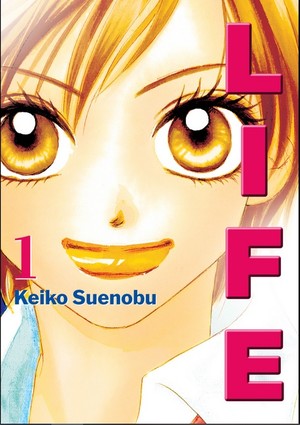The Spring 2023 Manga Guide
LIFE
What's It About?

All Ayumu dreams of is making it into the same high school as her best friend. But when she gets in and her friend doesn't, their friendship crumbles—sending Ayumu spiraling into depression. She finds relief in cutting herself, but soon realizes that her scars may interfere with her budding high school life. Can she trust her new friend, Manami, who seems too good to be true? Or will Ayumu's apparent lack of compassion and understanding get her tossed aside like she was before? And is there anyone else out there who could possibly love her for who she is?
Content Warning: The review below contains imagery and discussions of self-harm.
LIFE has story and art by Keiko Suenobu, with English translation by Fabian Kraft and lettered by Saludos Campos Blasco. Kodansha Comics released its first volume digitally on March 7.
Is It Worth Reading?

Rebecca Silverman
Rating:
First published in 2002 and partially released by Tokyopop not long after, it would be easy, and maybe even comforting, to write Keiko Suenobu's Life off as a relic of the past. The art certainly upholds this wishful thinking; Suenobu's style is very much of the early 2000s with the way she draws eyes and lips, and the flip phones, lack of social media, and artfully scrunched “tall socks” worn by the fashionable girls all speak to a world twenty years in the past. But the reason Kodansha has rescued this license isn't nostalgia. Even two decades after its initial release, Life presents a viciously recognizable picture of the social hellscape that middle and high school can be.
The story follows Ayumu, whom we first meet when she's in her third and final year of middle school. Her best friend, whom she sees as being her academic superior, is aiming for a specific, pretty good high school. Ayumu, desperate to remain with her best friend, declares that she'll aim for it as well. Ayumu throws herself into her studying, drastically improving her grades, and the result is that she outperforms her “smarter” friend, getting into her friend's dream school while the friend does not. Hurt and angry, Ayumu's friend turns on her, and their friendship is destroyed. Reeling from this and dealing with a mother who is neglectful at best, Ayumu retreats inside herself and turns to cutting, and Suenobu's use of her cutting shows that this isn't just a bad teen gimmick she's thrown into the manga to look more “real.”
Eventually, Ayumu falls into a friendship with Mana, a self-consciously cutesy classmate who seems to define herself by her adorability and her boyfriend. Mana also tries to isolate Ayumu from the other girls in class while simultaneously inserting herself into the group most likely framed as the “popular girls” – the ones who think they're more mature than everyone else because they're having sex and wear more makeup. Mana, unsurprisingly, turns out to be unstable, and things are looking very dicey for both girls at the volume's end. Life comes with hefty content warnings for self-harm, suicide ideation, and bullying. It isn't interested in glossing things over, and it could, for some readers, skirt perilously close to the border of torture porn. But that's how being a teenager can feel, especially if you're on the outside of the social norms, and that's what Suenobu is trying to depict. It skirts the line of torture porn, but it's still largely worth reading.
discuss this in the forum (33 posts) |
this article has been modified since it was originally posted; see change history
back to The Spring 2023 Manga Guide
Seasonal homepage / archives